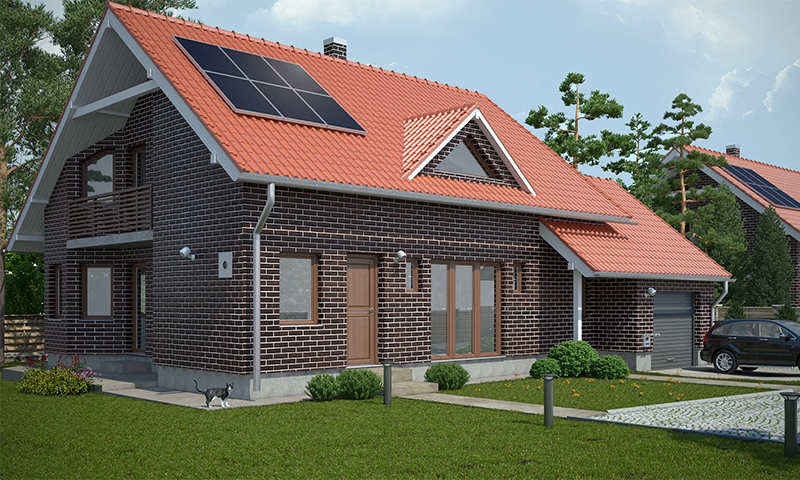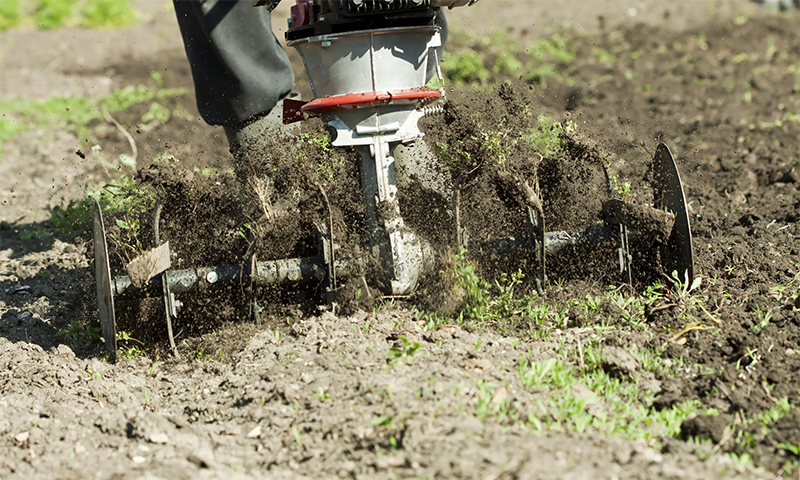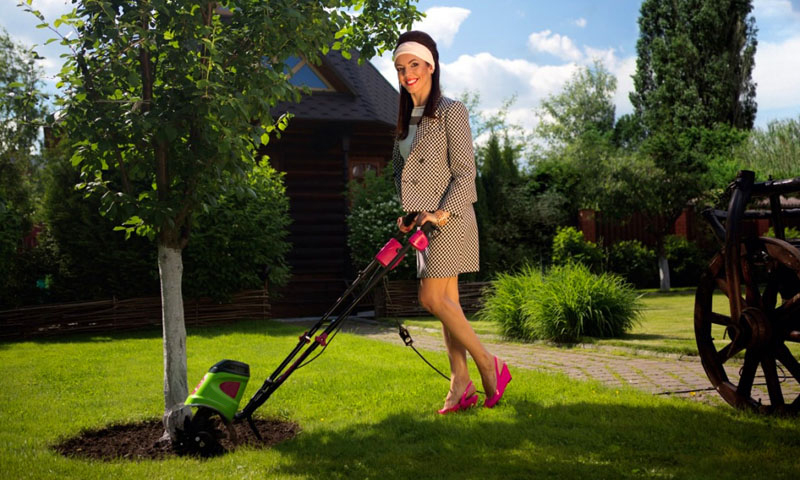In the spring you always want more greens and early vegetables in the diet. To speed up the process of growing domestic crops is obtained with the help of covering material for beds. This contributes to the preservation of heat, the protection of young seedlings from frost and reduces the efforts on the treatment of the soil. Summer residents often have to choose how to cover the beds, because such material is short-lived. Having researched this topic with the help of this article, you will get a practical substance for sheltering specific cultures.

Content:
The best manufacturers of covering material - which company to choose
If you have no time to delve into all the features and want to buy high-quality covering material, you can pay attention to the best companies in this industry:
1. Agreen
2. "Lumitex"
3. "Hexa"
4. "Himkor"
5. Ayask
For those who want to see more details on each existing brand of covering substances, such as: “Agrotex”, “Lutrasil”, “Agril”, “Agrospan”, you can read a detailed review.
Well, to understand everything yourself and choose the right material to cover the ground and grow garden crops, this article is presented.
Composition and application of covering material

Covering material is made from ethylene polymers by thermoplastic processing under pressure. This makes it possible to obtain a sufficiently dense artificial web that is resistant to impacts, passes light and heat well, does not deform when frost, and has low adhesion.
Thanks to these properties, covering material is well suited for protecting young seedlings and soil, retaining moisture in the soil, and also helps to combat weeds.
It is used in several ways:
1. Directly cover plants with material that rises as the stems grow. So that the canvas does not fly off, the edges are covered with earth or covered with a wooden bar.
2. Construct a small arc above the bed and cover the frame.
3. Build high-grade greenhouses and sheathe roll material.
4. They are laid on the ground, and small cuts are made for the germination of the stems.
This synthetic substance is used in different seasons. In spring, they are protected by young shoots from frequent frosts, which makes it possible to get cucumbers, tomatoes, strawberries and greens earlier than usual. In the summer, the material prevents the rapid evaporation of moisture from the soil and this reduces the work on the care of plants (frequent watering, hilling).
In the fall, artificial fabric makes it possible to re-harvest radishes, carrots, strawberries, cucumbers and zucchini when the nights are already cold and the sprouts do not survive under normal conditions. In winter, covering material is used to protect tubers and seeds remaining in the soil (varieties of flowers, garlic, strawberry roots). They are also covered with berry bushes from autumn to spring in harsh regions.
Due to its dense structure and interaction with light, covering material is able to:
- increase yield;
- reduce moisture loss in the heat;
- accelerate the ripening of fruits;
- reduce labor costs for tillage;
- protect from frost;
- prevent birds from eating the crop;
- neutralize the extra ultraviolet.
Types of covering material
The canvas for covering beds can be of several types, which are distinguished by their structure and quality.
Polyethylene film

Due to heat treatment under pressure, a polymeric substance is formed, which is popularly called polyethylene. Most often, it is completely transparent or cloudy.
Different primary and secondary type of production (recycling).Suitable for covering beds by placing on a small frame of arcs. Under it is convenient to grow strawberries, peppers, tomatoes, carrots, onions, garlic.
Advantages:
- passes light well;
- protects against frost;
- cheap;
- keeps the incoming heat;
- light;
- sold in all building and gardening stores.
Disadvantages:
- it is used only on arcs or full-fledged greenhouses, since the placement directly on plants breaks young shoots;
- does not pass water that demands more labor expenses on watering;
- if the bed is not ventilated, a high temperature inside may rise, which will destroy the shoots;
- wiped at the corners of the frame from frequent winds;
- condensate periodically forms under the film, due to which diseases are formed on plants;
- stretches from the load (snow, hail) and sags later;
- a short lifetime, usually one season, after which the material has to be changed.
Nonwoven fabric
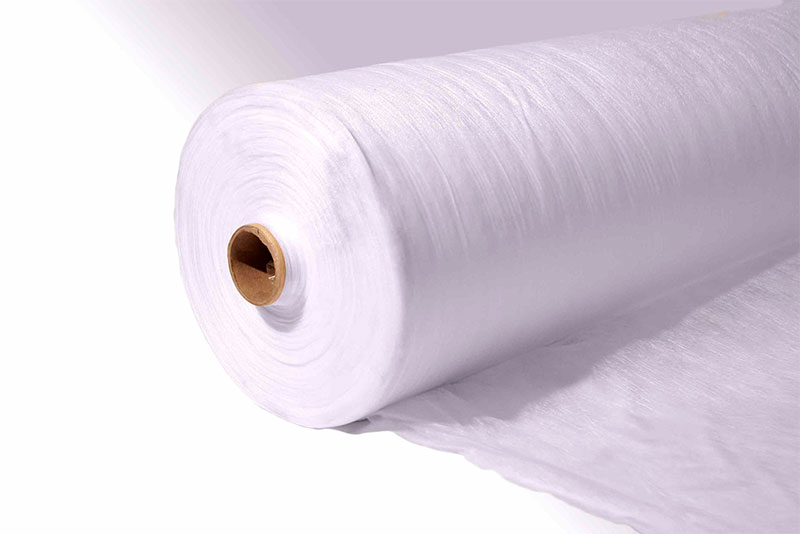
This cloth is called: agrofibre, agrofabric, spunbond. It is formed by melting a polymer and passing it through dies. The output is continuous filaments, which are held together by chemical impregnation or needling. The result is a material that looks like a film, but is much softer to the touch and lighter in weight.
It can be used to cover full greenhouses, and for laying on top of plants without any frame. The fabric is suitable for growing tender and thin stems of young tomatoes and peppers. It is practical for them to wrap shrubs for the winter. Good material and as mulch, when it is laid on the ground, and the shoots pass through the slots. This neutralizes weed shoots and reduces garden maintenance work.
Advantages:
- long service life (about 6 years);
- light weight;
- the ability to lay directly on the stems due to the soft structure;
- if necessary, you can sew two pieces to increase the width;
- available in several colors;
- passes air and moisture through the boundaries between the propylene fibers;
- actively fights weeds during mulching;
- You can water the beds without removing the material.
Disadvantages:
- more expensive than film;
- Stitching edges does not give a full effect.
Cover material selection options
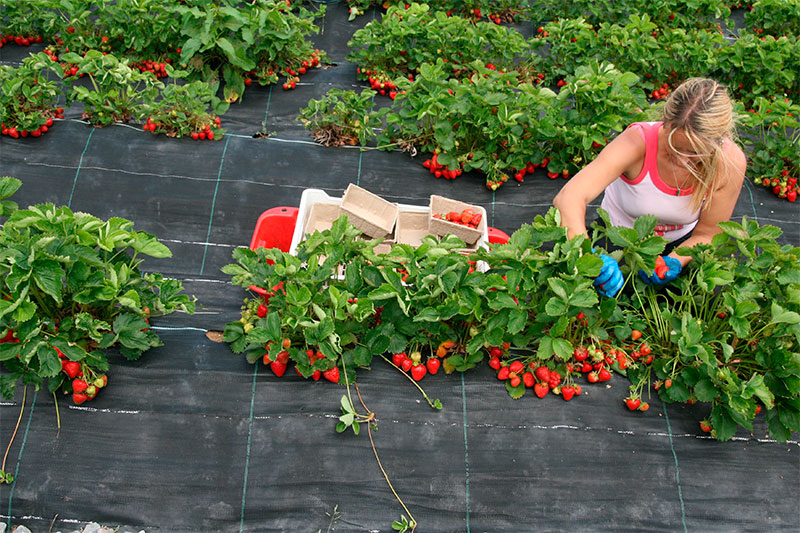
It is important to choose the right material to cover the beds and other vegetation. In order not to overpay for expensive densely or not to buy a film twice, you need to know the required parameters for growing certain crops, taking into account local conditions.
Density
Covering material is of different density, which is measured g / m². Polymeric substances with an index from 14 to 17 g / m² are suitable for direct laying on sprouts. Low weight will not harm young shoots, and they will be able to lift it as their own growth. It is suitable for low beds: carrots, onions, garlic, parsley, dill, strawberry.
In the case of using non-woven material, it can not be removed during watering, because the water passes well between the fibers. It is only necessary to weight the edges with earth or a wooden bar so that the canvas does not blow off with the wind.
Fabric with parameters of 28 - 42 g / m² is the most common and is used for arranging low greenhouses on arched steel bars. They are often used in cottages and household plots. Under them grow early tomatoes, cucumbers and zucchini. It is also practical to use the material for spring greenhouse cultivation of flowers. The density of the canvas is sufficient to withstand rain and wind.
A substance with an indicator of 42-60 g / m² is used for high-grade greenhouses with a lifetime for the entire season. Covering material will not allow the birds to peck up the crop, save it from spring frosts and help avoid overheating in the heat. Such cloths are suitable for podzimny crops and thermophilic plants.
The densest polymer is a material with an index higher than 60 g / m², which is used for mulching. It is placed on the ground, where the greenhouse effect is ensured, as a result of which the soil warms up quickly and is ready for planting.In the canvas, cross-shaped incisions are made through which the trunks of the plants pass. Due to the fact that the weeds are completely covered and do not receive light, they quickly fade.
Colour
Cover materials come in a variety of colors that serve a specific purpose:
1. White
Well suited for cold regions, because it attracts the sun's rays and contributes to a greater warming of the soil. They can cover greenhouses or lay on the ground before planting.
2. The black
Effectively reflects light on plants. It spreads directly on the ground and "suppresses" the growth of weeds. It is practical for a developed plot, where there is a lot of weed in the soil.
3. Black and white
An innovation that is designed to strike on the ground. The black side is laid down, which contributes to the reduction of physical labor for processing the area from the grass, and the white repels active sunlight and protects the crops from overheating. Suitable for growing in warm regions, as well as in the case of older people who can water the beds through the material and less weed them.
4. Green
Serves as a near-barrel décor and performs the function of mulching. Basically bought by busy people who do not have time to work in the garden, but I want to have a beautiful landscape next to the house.
Roll width
This parameter can be from 1.5 m to 3.2 m. In order to cover the beds, it is not recommended to connect stripes of coils, since this worsens some material properties. Therefore, it is necessary to choose the width of the canvas starting from the dimensions of the planted area. The edges of the polymer fabric should protrude beyond the boundaries of 10 cm to sprinkle them with earth. For narrow beds of greens or carrots, a 1.6 m roll is enough. To take care of cucumbers and tomatoes, a width of 2.1 m is needed. For a large strawberry section, you need 3.2 m material.
Presence of reinforcement
Some films are supplied with additional rigid inserts in the form of a lattice grid inside the material. This increases the density of the web and contributes to long life. Such polymeric shelter is suitable for regions with strong winds, where the usual film quickly breaks through the projections of the arches and loses its functionality.
UV stabilizer
There are covering canvas with the designation "SUF", which indicates the presence of a stabilizing layer for ultraviolet radiation. In regions with insufficient sunlight, such a film converts the rays to infrared light, which has a longer and more gentle effect on the shoots. This allows you to light up the plants even in the evening.
What covering material to choose
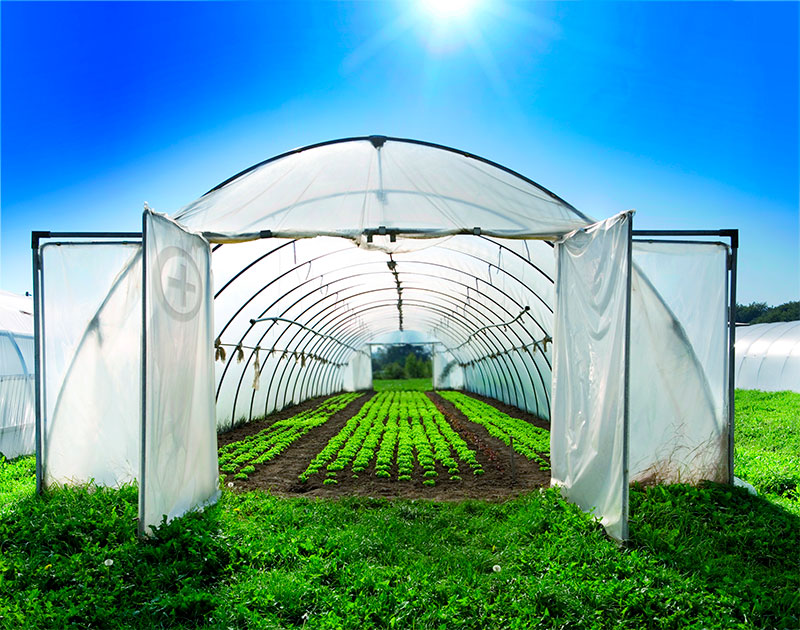
Understanding the differences of this gardening device, we can distinguish certain parameters for specific needs:
1. For the distillation of early greens (onions, parsley, dill, basil) suitable transparent plastic film with a density of 30 g / m². Or sprouts can be covered with spunbond 17 g / m². 1.6 m wide
2. To get tomatoes and cucumbers faster, you need an arched frame and agrofiber in 28 g / m² of white color with a width of 2.1 m.
3. To mulch the soil under strawberries, you need a non-woven fabric with a color of 42 g / m² in black, which is convenient to water. Cover the area stands a roll of 3.2 m wide.
4. In harsh regions, with a short day and a cold climate, agrofibre 42-60 g / m² with a two-color solution will be required. Or here you can cover the plants with a film with UV stabilization. Enough 3.2 m wide
5. For a small greenhouse for the whole season, you can buy a white reinforced canvas with a density of 90 g / m² and a width of 2.1 m.
How much is covering material
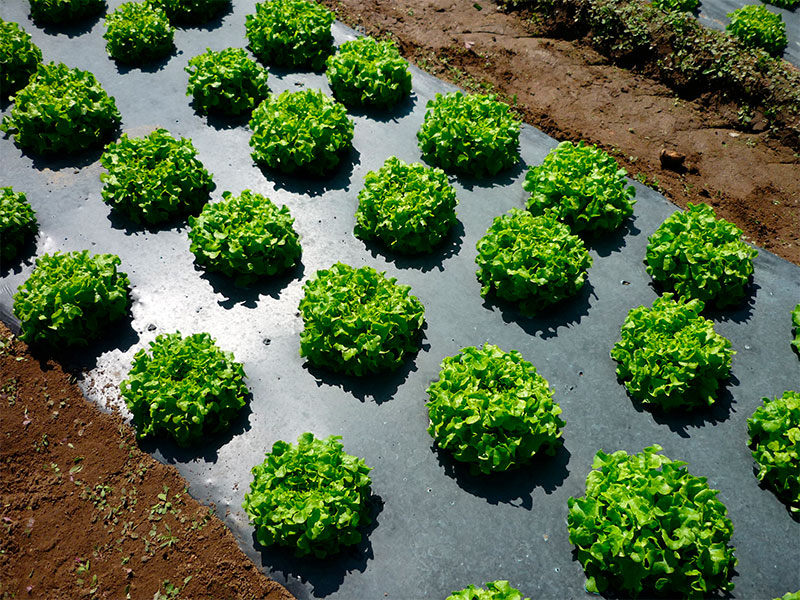
Here is the estimated price of the polymer in a roll 10 m long and described in the previous subtitle width for various needs:
1. To cover the beds under the greens will have to spend 95 rubles.
2. For tomatoes and cucumbers under the frame the film will cost 140 rubles.
3. Mulching under strawberries will require you to pay 360 rubles.
4. The film for the harsh regions is sold for 500 rubles.
5. Reinforced material for the greenhouse will cost 540 rubles.
It will be interesting to friends too

